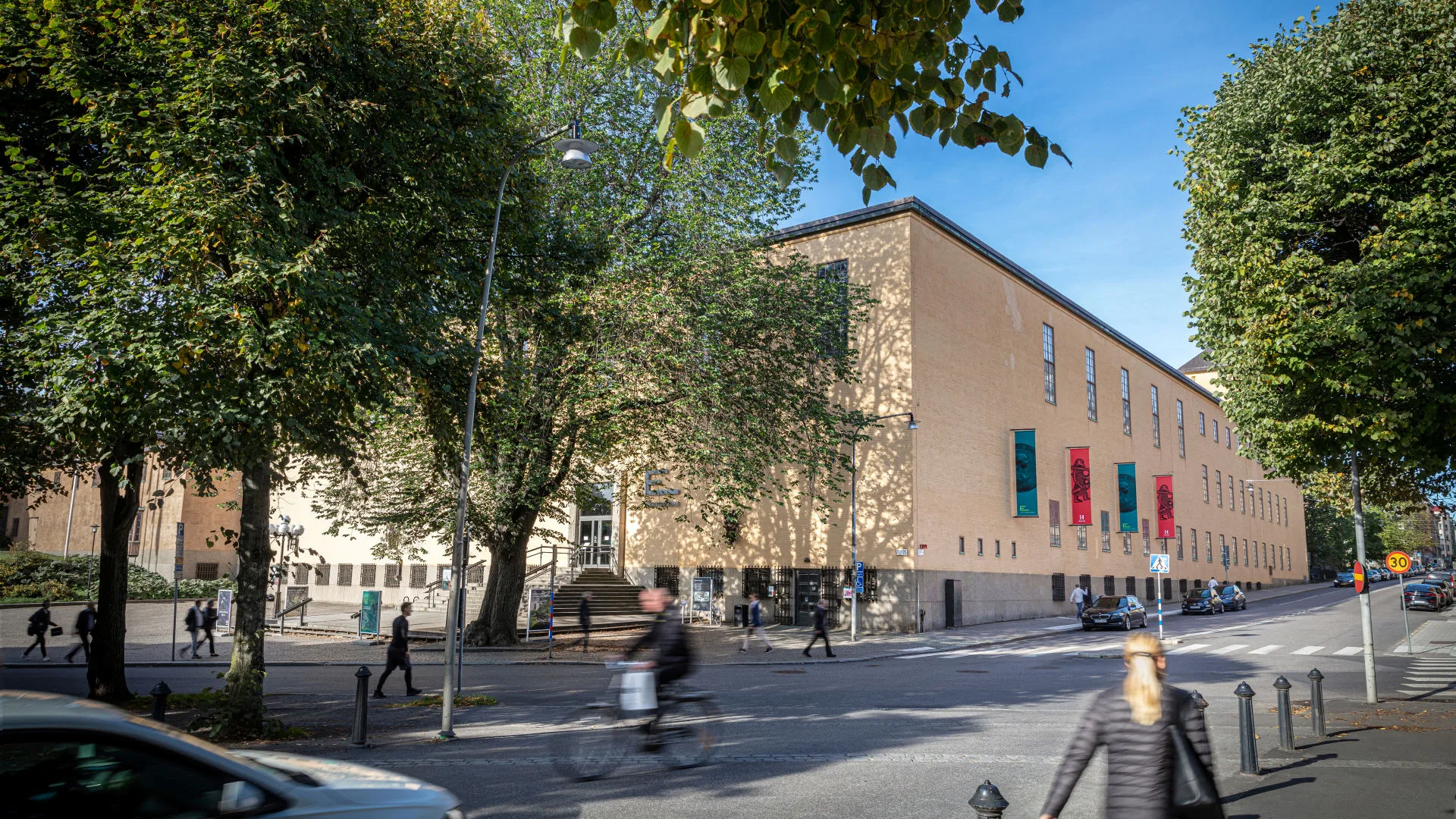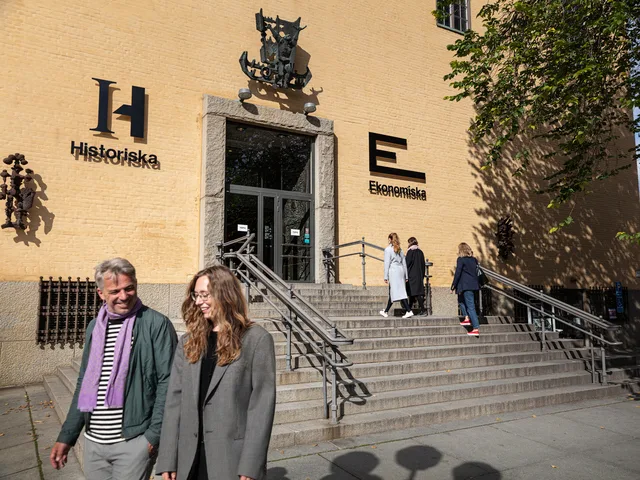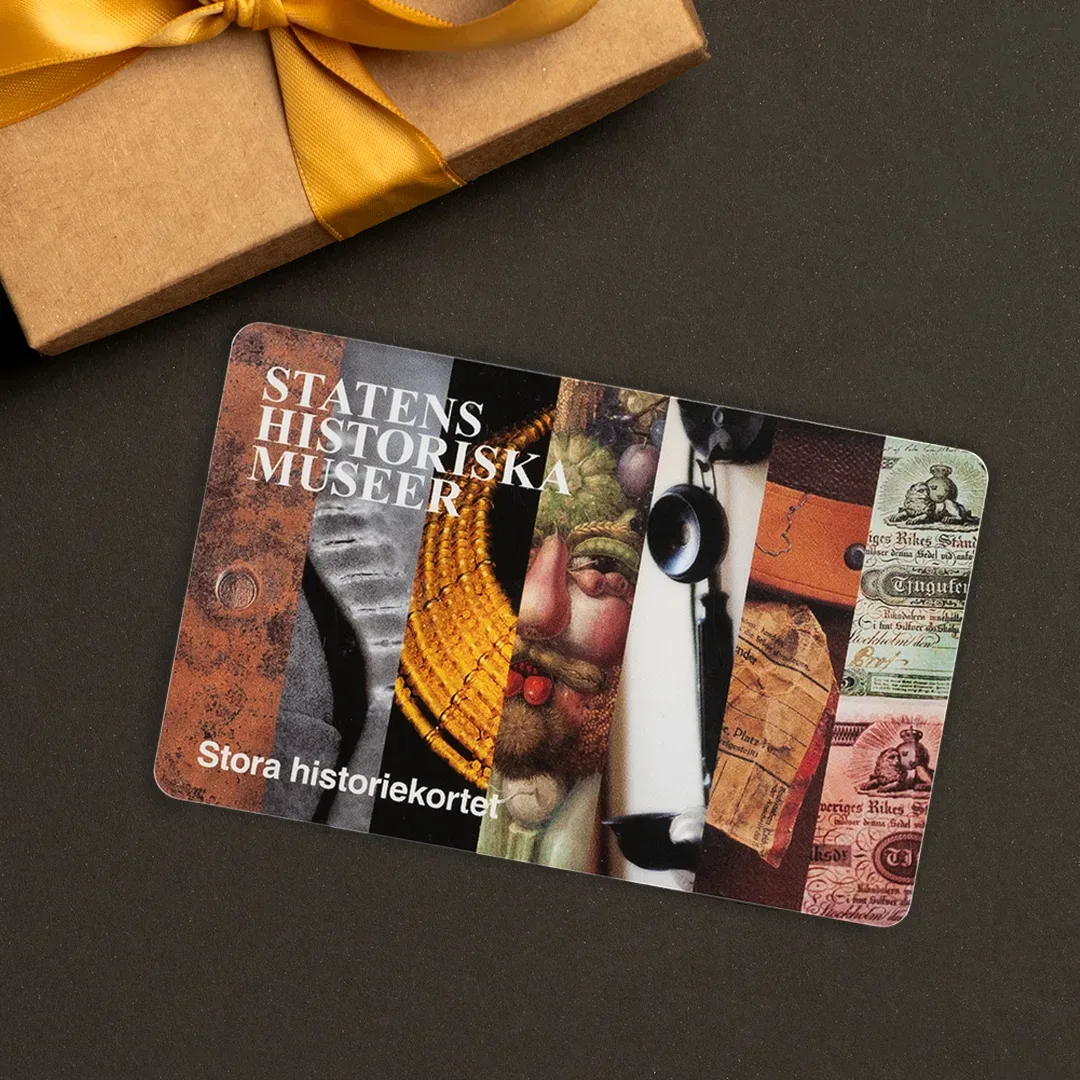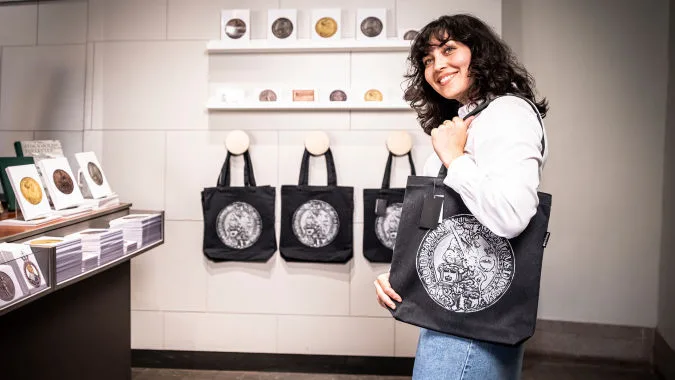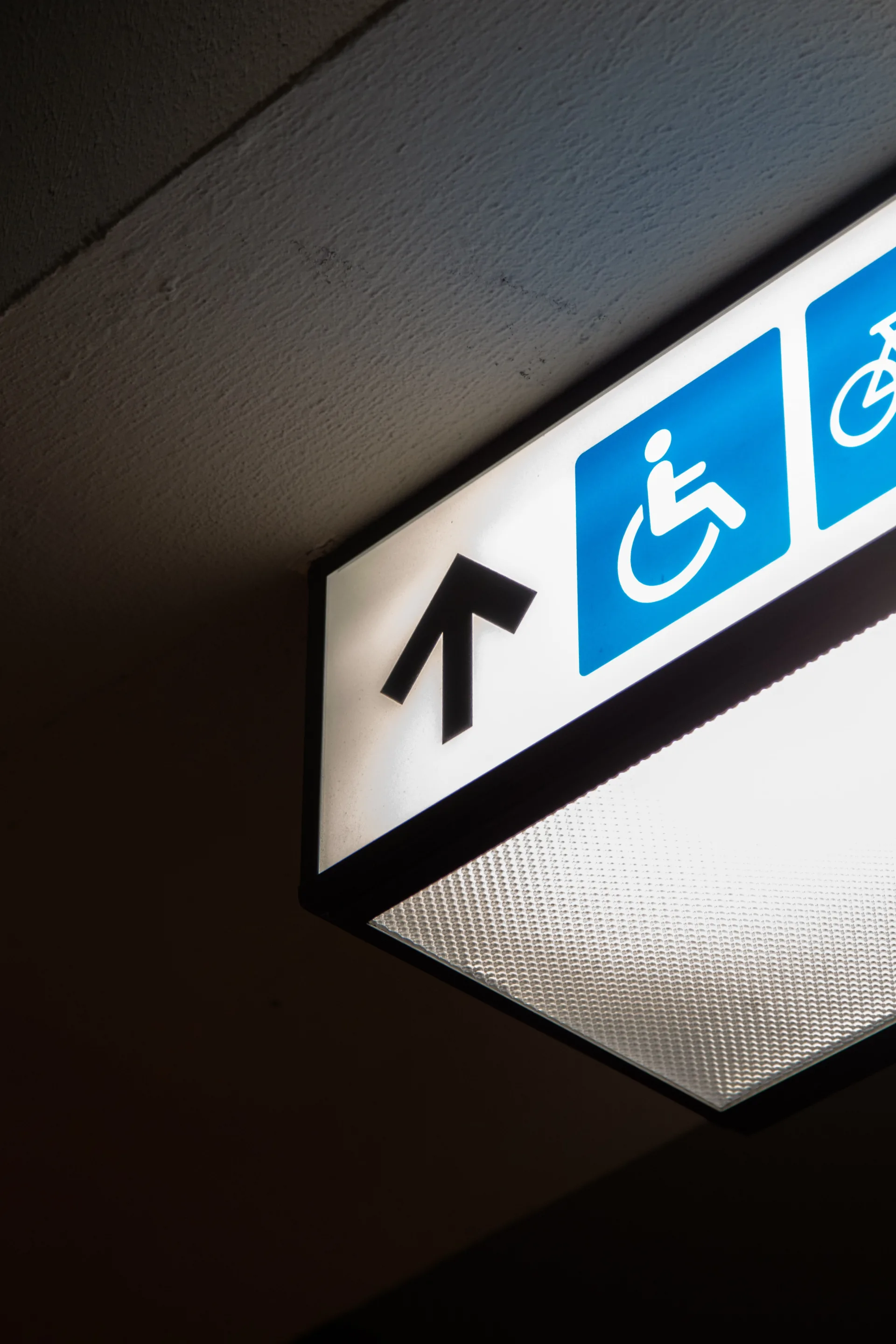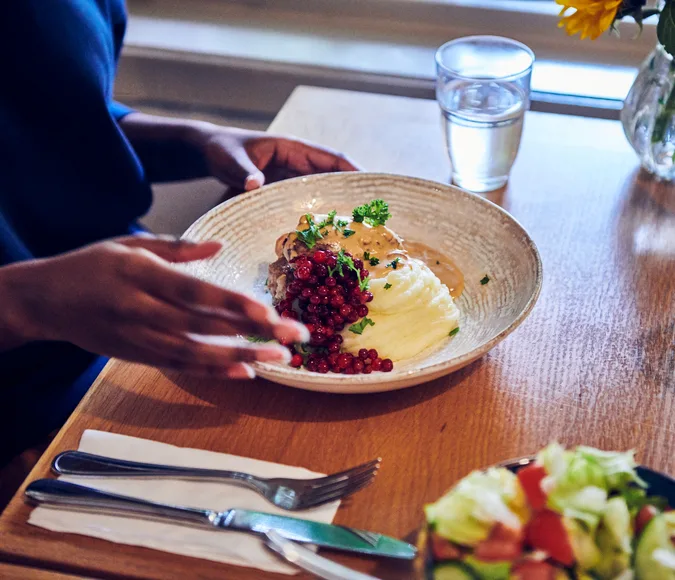Plan your visit
The Economy Museum is located in the same building as the Swedish History Museum, a short walk from Djurgårdsbron, Karlaplan, and Östermalmstorg.
week 30 2024
- Monday22/7Open11:00-18:00
- Tuesday23/7Open11:00-18:00
- Wednesday24/7Open11:00-18:00
- Thursday25/7Open11:00-18:00
- Friday26/7Open11:00-18:00
- Saturday27/7Open11:00-18:00
- Sunday28/7Open11:00-18:00
Guided tours and family activities every day this summer!
Your visit
30 minutes, an hour or a full day?
30 minutes:
The exhibition MONEY! takes you on a journey through Sweden's economic history. You'll have time for a quick overview and to explore some of the interactive stations. Finish with a takeaway coffee from Restaurant Rosengården.
An hour:
In one hour, you'll have time to see our two exhibitions. MONEY! takes you on a journey through Sweden's economic history. In the Economy Lab, you can explore today's economy through various interactive stations.
Full day:
- Explore Sweden's economic history in the exhibition MONEY! You'll find Viking Age silver treasures, and plenty of coins and banknotes that tell exciting stories of people from the past. Which object will be your favorite?
- Listen to the audio guide for MONEY! to delve deeper into stories and objects.
- Have a coffee break or lunch at Restaurant Rosengården. It's free to visit the museum shop.
- In the Economy Lab, you can explore today's economy through various interactive stations.
- Take the opportunity to visit the Swedish History Museum, included in your entrance ticket.
- Finish off with a visit to the museum shop. You'll find books on economics and numismatics, souvenirs, snacks and gifts. It's free to visit the museum shop.
Visit with children
Children 5 years and up:
- It's free admission for children aged 0-18.
- Explore the interactive stations in the exhibtion MONEY! See if you can lift the heavy metal coin and create balance in the weight station.
- Check out the museum's cool artifacts like Viking Age silver treasures. Which objects will become your favorite?
- Enjoy lunch and ice cream at Restaurant Rosengården. It's free to visit the restaurant.
- Want to do something crafty? Check out the workshop we share with the Swedish History Museum; ask at the entrance desk for the current offerings and opening hours.
- Visit the museum shop where you'll find candy, stuffed animals, and children's books. It's free to visit the museum shop.
Children 8 years and up:
- It's free admission for children aged 0-18.
- Explore the interactive stations in the exhibtion MONEY! You can see Viking Age silver treasures and other cool artifacts. Which object will become your favorite?
- Play and have fun together: learn what a coin can tell by exploring an enlarged coin. Try to create balance at the weight station and test the museum's own board game. In the game The Money Matrix, you can reveal secret agents hiding in different historical periods.
- Enjoy lunch and ice cream at Restaurant Rosengården. It's free to visit the restaurant.
- Want to do something crafty? Check out the workshop we share with the Swedish History Museum; ask at the entrance desk for the current offerings and opening hours.
- Do you have the energy for more? Try our job interview and find out what job you would have had during the 19th century.
- Visit the museum shop where you'll find candy, stuffed animals, and children's books. It's free to visit the museum shop.
Children 13 years and up:
- It's free admission for children aged 0-18.
- Explore the exhibtion MONEY! You can see Viking Age silver treasures and other cool artifacts. Which object will become your favorite?
- Play and have fun together: learn what a coin can tell by exploring an enlarged coin. Try to create balance at the weight station and test the museum's own board game. In the game The Money Matrix, you can reveal secret agents hiding in different historical periods.
- Enjoy lunch and ice cream at Restaurant Rosengården. It's free to visit the restaurant.
- Explore the Economy Lab: How much does it cost to charge your phone overnight? Visit the piggy bank station and the treasure station, and ponder our dilemma questions. At the scanning station, you can see the invisible price tag for the things we buy. Does more money make us happier? In the exhibition, there are four short films that explain various questions related to money and economics in an easy and entertaining way.
- Want to do something crafty? Check out the workshop we share with the Swedish History Museum; ask at the entrance desk for the current offerings and opening hours.
- Do you have the energy for more? Try our job interview and find out what job you would have had during the 19th century.
- Visit the museum shop where you'll find candy, stuffed animals, and children's books. It's free to visit the museum shop.
Staff picks: 6 not-to-miss objects
Do you want a quick overview of Sweden's economic history? Here are 6 items you shouldn't miss in the exhibition MONEY!:
- A Viking Age silver treasure: The treasure comes from Övide in Gotland. It weighs almost 2 kilos and contains 712 coins from various areas, mostly from Germany and England but also from other parts of Europe. The coins show what different coin motifs looked like on the continent.
- The first Swedish coins: In the year 995, Olof Skötkonung had Sweden's first coins minted in Sigtuna. He enlisted the help of knowledge from England in the form of imported coin masters.
- The world's largest coin: Because copper was worth less than silver, coins became larger to correspond to the same value. In 1624, Sweden began minting these copper coins, first in lower denominations and later in higher denominations. In 1644, higher denominations were introduced, which came to be called "plåtmynt". Try lifting a copy!
- The first banknotes in Europe: See one of the first banknotes in Europe, which is from Sweden, from the year 1662 with a value of 5 daler copper coins. The banknotes were issued by Stockholm's Banco, Sweden's first bank, founded by Johan Palmstruch in 1656.
- A Nobel Medal: The Nobel Medal on display was awarded to Swedish chemist and physicist Svante Arrhenius in 1903. He became the first Swedish Nobel laureate when he received the Nobel Prize in Chemistry.
- The Bitcoin ATM: Have you ever seen a Bitcoin ATM? If not, it might be because they didn't catch on in Sweden. The machine allowed you to insert cash, which was converted into Bitcoin. Now, it's behind glass at the museum.
A numismatic visit
- Explore coins and currency throughout history in the exhibition MONEY! See coins, banknotes, ducats, and other forms of payment from the Viking Age to today. Discover the never-before-shown Övide Treasure in its storage container. Try to lift a copy of the world's heaviest coin.
- Use the digital screens in the exhibition to zoom in and get really close to the items, both front and back!
- Delve deep into stories and objects with the help of the audio guide.
- Have a coffee break or lunch at Restaurant Rosengården.
- Take the opportunity to visit the Swedish History Museum, included in your admission ticket.
- Finish off with a visit to the museum shop. Here you'll find, among other things, books on numismatics and our anniversary medal.
- Before or after your visit, you can delve deeper in the collections that are not on display. Explore the collections.

